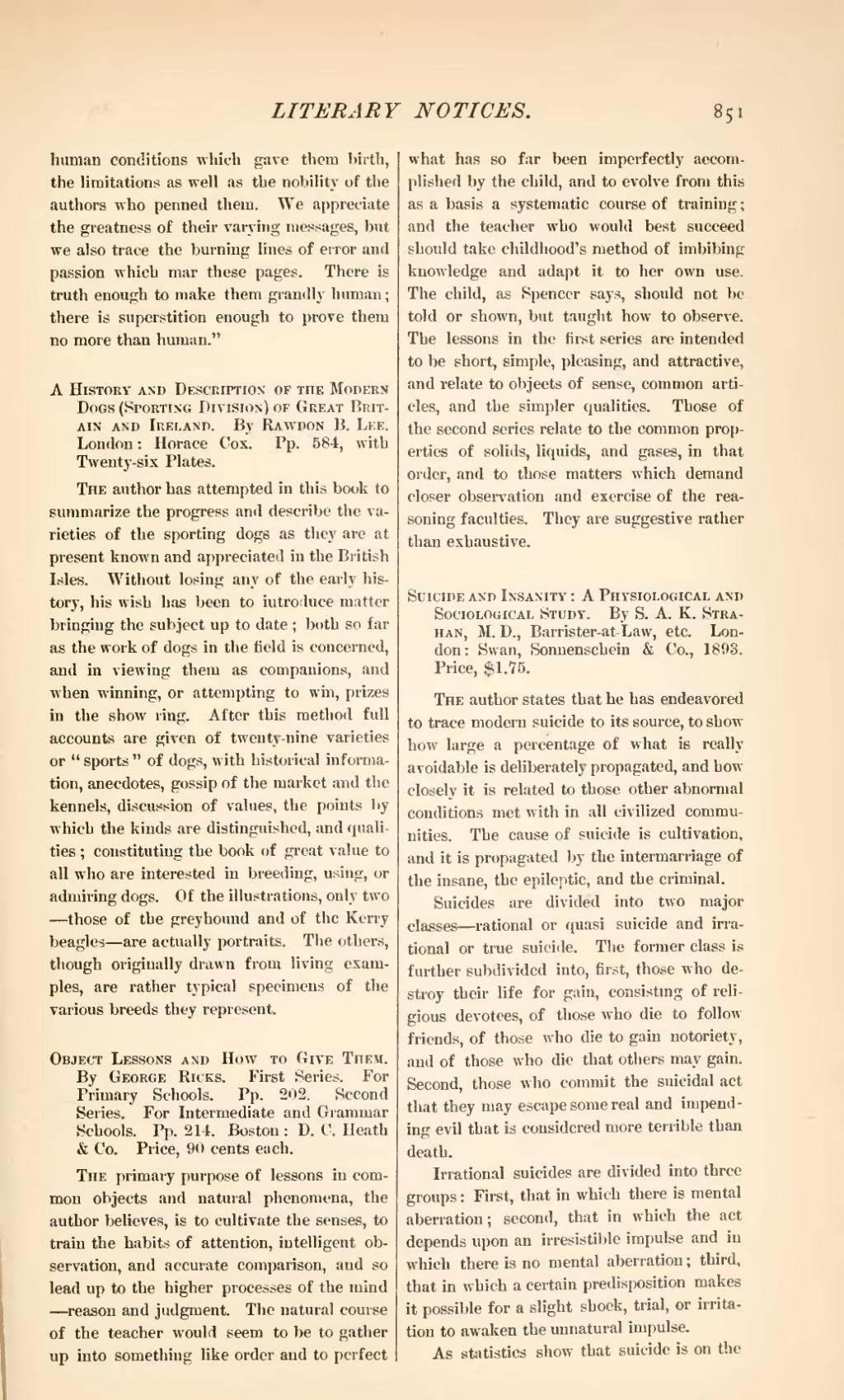human conditions which gave them birth, the limitations as well as the nobility of the authors who penned them. We appreciate the greatness of their varying messages, but we also trace the burning lines of error and passion which mar these pages. There is truth enough to make them grandly human; there is superstition enough to prove them no more than human."
A History and Description of the Modern Dogs (Sporting Division) of Great Britain and Ireland. By Rawdon B. Lee. London: Horace Cox. Pp. 584, with Twenty-six Plates.
The author has attempted in this book to summarize the progress and describe the varieties of the sporting dogs as they are at present known and appreciated in the British Isles. Without losing any of the early history, his wish has been to introduce matter bringing the subject up to date; both so far as the work of dogs in the field is concerned, and in viewing them as companions, and when winning, or attempting to win, prizes in the show ring. After this method full accounts are given of twenty-nine varieties or "sports" of dogs, with historical information, anecdotes, gossip of the market and the kennels, discussion of values, the points by which the kinds are distinguished, and qualities; constituting the book of great value to all who are interested in breeding, using, or admiring dogs. Of the illustrations, only two—those of the greyhound and of the Kerry beagles—are actually portraits. The others, though originally drawn from living examples, are rather typical specimens of the various breeds they represent.
Object Lessons and How to Give Them. By George Ricks. First Series. For Primary Schools. Pp. 202. Second Series. For Intermediate and Grammar Schools. Pp. 214. Boston: D. C. Heath & Co. Price, 90 cents each.
The primary purpose of lessons in common objects and natural phenomena, the author believes, is to cultivate the senses, to train the habits of attention, intelligent observation, and accurate comparison, and so lead up to the higher processes of the mind—reason and judgment. The natural course of the teacher would seem to be to gather up into something like order and to perfect what has so far been imperfectly accomplished by the child, and to evolve from this as a basis a systematic course of training; and the teacher who would best succeed should take childhood's method of imbibing knowledge and adapt it to her own use. The child, as Spencer says, should not be told or shown, but taught how to observe. The lessons in the first series are intended to be short, simple, pleasing, and attractive, and relate to objects of sense, common articles, and the simpler qualities. Those of the second series relate to the common properties of solids, liquids, and gases, in that order, and to those matters which demand closer observation and exercise of the reasoning faculties. They are suggestive rather than exhaustive.
Suicide and Insanity: A Physiological and Sociological Study. By S. A. K. Strahan, M. D., Barrister-at-Law, etc. London: Swan, Sonnenschein & Co., 1893. Price, $1.75.
The author states that he has endeavored to trace modern suicide to its source, to show how large a percentage of what is really avoidable is deliberately propagated, and how closely it is related to those other abnormal conditions met with in all civilized communities. The cause of suicide is cultivation, and it is propagated by the intermarriage of the insane, the epileptic, and the criminal.
Suicides are divided into two major classes—rational or quasi suicide and irrational or true suicide. The former class is further subdivided into, first, those who destroy their life for gain, consisting of religious devotees, of those who die to follow friends, of those who die to gain notoriety, and of those who die that others may gain. Second, those who commit the suicidal act that they may escape some real and impending evil that is considered more terrible than death.
Irrational suicides are divided into three groups: First, that in which there is mental aberration; second, that in which the act depends upon an irresistible impulse and in which there is no mental aberration; third, that in which a certain predisposition makes it possible for a slight shock, trial, or irritation to awaken the unnatural impulse.
As statistics show that suicide is on the

